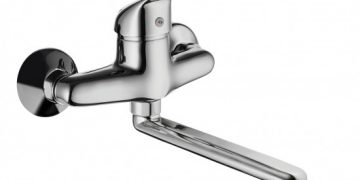
Sleep apnea is a common condition that affects millions of people worldwide. One of the most effective treatments available is continuous positive airway pressure (CPAP) therapy. At the heart of this therapy is the sleep apnea mask, a crucial component that helps users breathe properly throughout the night.
Without the proper mask, the entire treatment process can become uncomfortable or even ineffective. That’s why selecting the right sleep apnea mask is just as important as the machine itself.
What Is a Sleep Apnea Mask and Why Is It Important?
A sleep apnea mask delivers pressurized air from the CPAP machine to your airways, preventing them from collapsing during sleep. The goal is to maintain an open airway so that you can breathe normally without interruptions. These pauses in breathing, known as apneas, can lead to poor sleep quality, fatigue, and even long-term cardiovascular problems.
The mask plays a critical role in ensuring the air reaches your airway efficiently. If the mask doesn’t fit properly or feels uncomfortable, users are less likely to stick with the therapy. That’s why both fit and function are essential when choosing a sleep apnea mask.
Types of Sleep Apnea Masks and Their Differences
There isn’t a one-size-fits-all solution when it comes to sleep apnea masks. Each individual has different sleeping habits, facial features, and preferences. The three most common types are nasal masks, nasal pillow masks, and full-face masks.
Nasal masks cover the nose and are often chosen by those who breathe through their nose while sleeping. They offer a good balance of comfort and stability, making them a popular choice.
Nasal pillow masks are lighter and more compact. They sit just at the entrance of the nostrils, offering minimal facial contact. This style is ideal for people who feel claustrophobic with larger masks or wear glasses to bed.
Full-face masks cover both the nose and mouth. These are best suited for mouth breathers or people with frequent nasal congestion. Though larger, they provide a secure fit and reliable performance.
The choice of sleep apnea mask often depends on personal comfort, sleep position, and whether the user breathes through the nose or mouth during sleep.
Getting the Fit Right for Effective Therapy
Even the best sleep apnea mask won’t work if it doesn’t fit correctly. A poorly fitting mask can lead to air leaks, skin irritation, or pressure sores, all of which reduce the effectiveness of the therapy and make it harder to sleep.
When selecting a mask, it’s essential to measure your face according to the manufacturer’s guidelines or consult with a sleep specialist. Many suppliers now offer sizing kits or trial periods so you can test different masks before committing to one.
Look for masks with adjustable headgear, soft cushioning, and lightweight materials. These features can improve comfort and reduce the likelihood of developing pressure points or discomfort during the night.
Dealing with Common Challenges of Using a Sleep Apnea Mask
New users often find it difficult to get used to wearing a sleep apnea mask. It can feel foreign at first, and some people may experience dry mouth, skin redness, or feelings of claustrophobia.
The key is to be patient and persistent. Most discomforts can be addressed by tweaking the fit, trying a different mask style, or using accessories like humidifiers or chin straps. Humidifiers can prevent dryness, while chin straps help mouth breathers use nasal masks more effectively.
If you continue to struggle with comfort, it’s worth consulting your healthcare provider. Sometimes a minor adjustment can make a big difference in how the sleep apnea mask feels and performs.
Keeping Your Sleep Apnea Mask Clean and Functional
Proper maintenance of your sleep apnea mask is essential not only for hygiene but also for optimal performance. Masks can accumulate facial oils, dirt, and bacteria over time, leading to skin irritation or respiratory issues if not cleaned regularly.
Wash your mask daily with warm water and mild soap, and allow it to air dry. Avoid using harsh chemicals, as they can damage the materials. Replace cushions and headgear as recommended by the manufacturer to ensure a tight seal and comfortable fit.
By staying consistent with cleaning and replacing parts, you can extend the life of your sleep apnea mask and maintain a more effective therapy routine.
Technology and Innovation in Modern Sleep Apnea Masks
The design of the sleep apnea mask has come a long way over the years. Today’s masks are far more user-friendly, lighter, and better tailored to individual needs. Many now feature quiet exhalation ports, magnetic clips for easy removal, and memory foam cushions that adapt to your face over time.
There are also apps and smart CPAP machines that track your usage data and alert you if your mask fit is off or if you’re not getting enough pressure. These features make it easier for users and healthcare providers to fine-tune treatment plans for better results.
Choosing the Right Sleep Apnea Mask for Your Needs
Finding the right sleep apnea mask might take some trial and error, but it’s worth the effort. Comfort, fit, and performance should all be considered before making your choice. Don’t hesitate to seek advice from sleep therapists or try different styles to see what suits you best.
Stick with the therapy, even if the adjustment period feels frustrating. Over time, your body will adapt, and the benefits of quality sleep—like better mood, energy, and long-term health—will make it all worthwhile.
Final Thoughts on the Sleep Apnea Mask
The sleep apnea mask is more than just a medical device—it’s a bridge to better sleep, improved health, and a more energized life. With the right mask, consistent maintenance, and professional guidance, CPAP therapy can become a seamless part of your nightly routine. Don’t underestimate the importance of comfort and fit. They can make all the difference in how successful your treatment will be.













